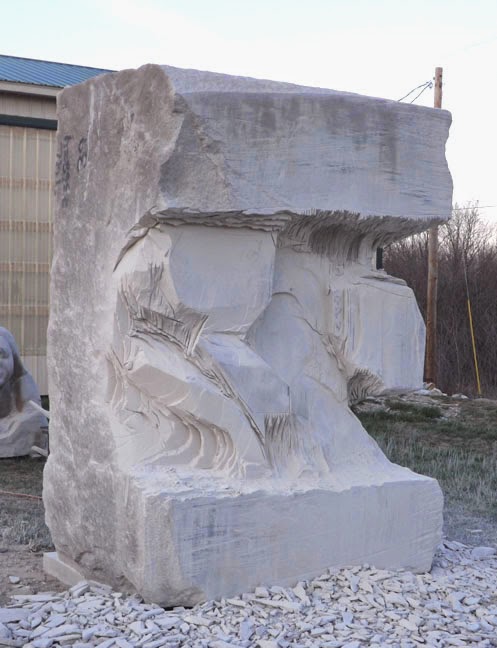 |
| I take measurements from the model of the lion and mark the outline of the lion's head on the stone. This shows me where I can safely remove stone though I will cut wide of the mark. |
 |
| It really looks like a bird from this angle. |
 |
| I have started to define the head (though it is on the large side am beginning to define the neck and shoulder. |
 |
| I use a crayon to mark the area that needs to be removed to get back to the shoulder. |






No comments:
Post a Comment